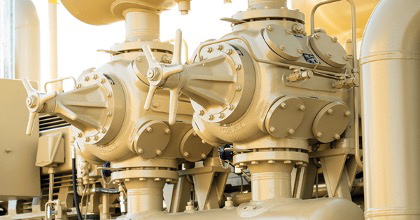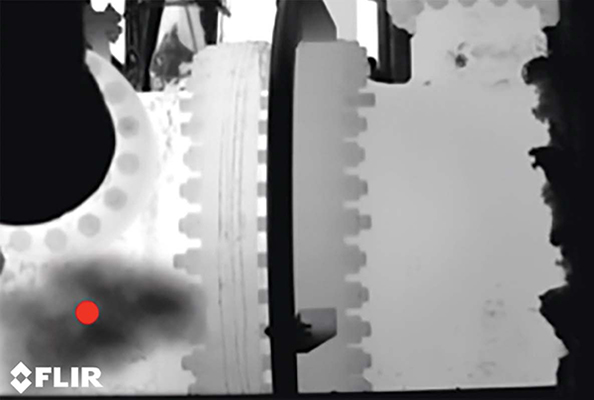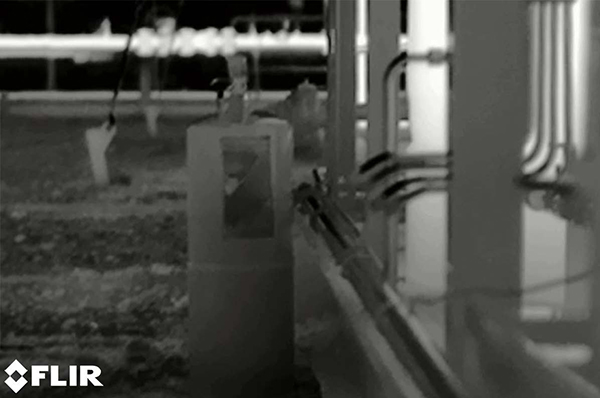Methane leak detection: How EPA changes to NSPS OOOOb and EG OOOOc impact OGI inspection regulations.
This is part one in a series that address changes to environmental protection rules from the US Environmental Protection Agency (EPA) concerning the detection and mitigation of oil and gas emissions, including methane, as well as the use of optical gas imaging (OGI) cameras.

Earlier this month at the global COP28 event in Dubai, the United States EPA released its final methane and other oil and gas emissions leak detection and repair (LDAR) rules, codifying previous draft and supplemental regulations introduced in 2021 and 2022, respectively.
The rulings represent the culmination of a major shift in how the U.S. Federal Government plans to regulate methane and other greenhouse gas emissions that contribute to global warming. The EPA estimates the new rule will reduce methane emissions nearly 80% below what they were projected to be, and that will “prevent an estimated 58 million tons of methane emissions from 2024 to 2038.”
Of particular interest are the new subparts commonly referred to as New Source Performance Standards (NSPS) “OOOOb” and Emissions Guidelines (EG) OOOOc. These updates are additions to the 2015 regulations known as “OOOOa,” which first established optical gas imaging (OGI) as the best system of emission reduction (BSER).
The OOOOb subpart is designed to strengthen the existing OOOOa rule covering new, modified, or reconstructed sources, including the consistent use of audio, visual, and olfactory technologies for fugitive gas emission detection, in addition to OGI.
OOOOc covers additional existing sources for methane emissions and is designed for the EPA to “inform states in the development, submittal, and implementation of state plans” to address existing sources. U.S. States have a deadline of 24 months to develop and implement a plan from the regulation affected date of December 6, 2022. After the state’s submission, regulated facilities will have at most 36 months to comply with the respective state’s OOOOc plan.
Here is a table summarizing the LDAR requirements for various subparts (Note: “In the Baseline” refers to the previous regulatory framework or requirements):

The most consequential changes to the rule relate to the expanded number of sources covered and affected sources within the energy supply chain. The rule also requires an increased frequency of detection for some monitoring sites, including increasing the use of OGI technologies to maintain compliance.
More specifically, process controllers must have a zero-leak rate and cannot have any emissions seen with an OGI camera, and OGI technology is allowed or encouraged in other specific applications, like compressors and closed vent systems. Some facilities will also move from semiannual OGI monitoring to bimonthly Audio, Visual, and Olfactory (AVO) inspections plus quarterly OGI monitoring while natural gas processing facilities will require bimonthly OGI inspections.

Furthermore, affected organizations have the option to use advanced methane detection technologies, including “periodic screening technologies” monthly with detection thresholds ranging from <1 kg/hr to <15 kg/hr depending on the technology and frequency of use, like quarterly, bimonthly, or monthly.
The rule also establishes a new detection threshold for advanced, continuous screening technologies of 0.40 kg/hour and must transmit mass emission rate data at least every 24 hours. These monitoring solutions fall into two categories: long-term (updating on a 90-day rolling average) and short-term (updating on a seven-day rolling average).
Finally, the rule requires “spatial resolution of technology” to serve as part of a follow- up inspection. For example, if a technology has an area or component level spatial resolution, the follow-up inspection is only required for all fugitive emissions components within a 2m and 0.5m radius. In previous regulation drafts, the entire site was required to be scanned, but this change reduces the burden to focus on known problem areas that are ideal for OGI camera use.

For a full list of how the NSPS regulations have changed from 2012 to today, check out this table of oil and gas sources covered by the EPA.
In the next blog, we will look more closely at Appendix K, which specifically addresses the “Determination on how to use an OGI camera” as stipulated in NSPS OOOOb and how it is applied to specifically referenced subparts of the regulation.
For more information about Teledyne FLIR OGI cameras and technology, visit: https://www.flir.com/instruments/optical-gas-imaging/
Scott Ellyson, CEO of East West Manufacturing, brings decades of global manufacturing and supply chain leadership to the conversation. In this episode, he shares practical insights on scaling operations, navigating complexity, and building resilient manufacturing networks in an increasingly connected world.